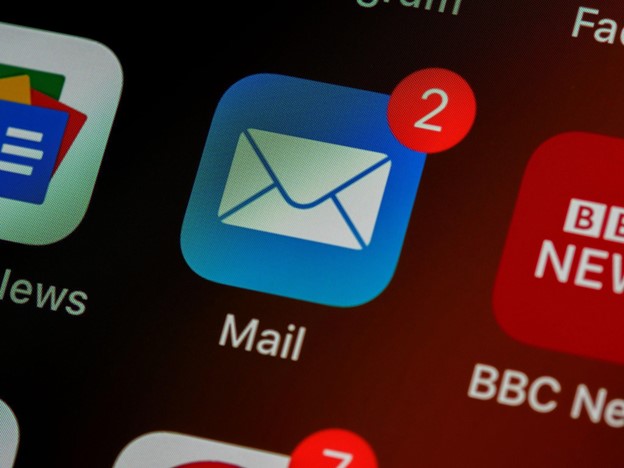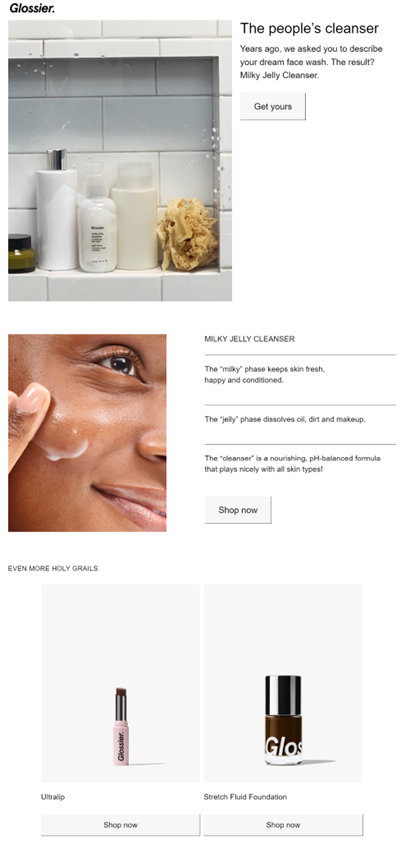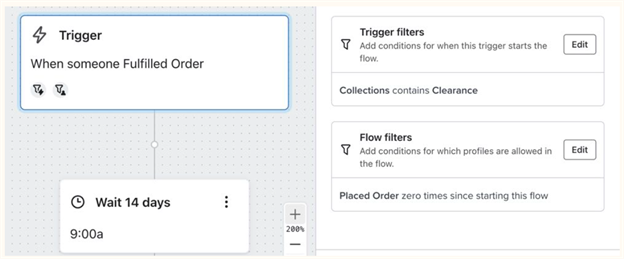
Many marketers consider cross-selling only limited to the on-site shopping experience.
Don’t be that person.
Cross-sell tactics work incredibly well with emails, too.
Rather, cross-sell emails can reach a much wider audience, giving people a chance to see your offers even after they’ve left your website.
Correctly implemented, these emails suggest complementary products while being natural. This enhances both the value of the initial purchase and the customers’ buying experience.
By recommending a top to go with a skirt, you’re not only increasing your chances of making another sale from the same customer but also showcasing the variety in your product lineup.
The key is to send the offer emails your customers actually want at the right time when they’re receptive to that conversation.
Feeling like it’s a lot to accomplish with one email? Don’t worry; we’ve got your back.
In this guide, we’ll walk you through building cross-sell email templates for Klaviyo and show you how to use Klaviyo’s built-in cross-sell flows to create a campaign that connects with your customers.
What are Cross-sale Email Templates?
A cross-sell email template lets you send suggestions for additional related or complementary products to a potential or existing customer. Such products may belong to the same or different category but should complement each other.
The recommended items are based on what visitors are currently browsing your online store, items in their cart, or previous purchases.
This helps brands increase the average order value by effectively turning first-time buyers into repeat customers. Plus, it’s an excellent way to re-engage a visitor or customer long after they’ve left your website.
Below is an example from Glossier, cross-selling complementary items by expanding the email’s focus from skincare to makeup, encouraging customers to consider adding more products to their cart.

Notice that the add-on products are not pushed aggressively. They are presented as “Even More Holy Grails”—this phrasing is inviting and suggests that these are must-have items without overwhelming the recipient.
Now that you understand cross-selling emails let’s discuss what makes them essential.
How Do Cross-Sell Email Templates Increase Revenue Opportunities?
1. Better Sales Value
As per Invesp, brands have a 60-70% chance of selling to an existing customer. While the probability of selling to a new prospect is only 5-20%.
Cross-sell emails nudge customers to buy additional products and boost the average order value (AOV))—the average amount that customers spend per order.
A higher AOV directly impacts your brand’s revenue. It enables you to generate more income without acquiring new customers. In other words, the higher the AOV, the greater the profitability.
2. Repeat Purchases
Your current customers are gold. It’s much easier to retain them than to acquire new ones.
Cross-sell emails are a simple way to drive spending from existing customers and return it to the business’s bottom line. This inevitably turns one-time buyers into repeat customers without spending extra bucks.
3. Customer Lifetime Value (CLV)
CLV is the total value a customer brings to your brand over the entire course of their relationship with you. The higher the CLV, the more revenue your business generates in the long run.
How are cross-selling and CLV related? Cross-selling helps you increase CLV.
By offering the right product suggestions, you enhance the effectiveness of your cross-sell email templates. This is a testament to your understanding of customers’ needs.
The feeling of being seen and recognized leads to higher satisfaction. They are more likely to trust your brand, stay loyal, and buy more over time.
4. Product Discovery
The idea of selling more during the initial purchase while keeping it natural and enhancing the customer experience can make marketers anxious.
But don’t worry!
Instead, strategically place related and relevant products on the customer’s radar through cross-sell emails. This helps showcase the breadth of your product range—products they might not have known about or considered purchasing initially.
The Anatomy of a Compelling Cross-Sell Email Template For Klaviyo
When crafting an irresistible cross-sell email template in Klaviyo for your next campaign, be sure to include the following elements:
1. Intriguing Subject Line
An enticing subject line is a non-negotiable element of a cross-sell email template. It’s your chance to grab the readers’ attention and have better email open rates. After all, no one will read your “amazing” copy if the cross-sell email never gets opened.
Remember the following tips for creating killer subject lines:
- Keep it short and sweet.
- Include the recipient’s name.
- Reference their initial purchase.
2. Engaging Preheader
Preheaders further help to tickle the curiosity of the subscriber. A bad preheader can get your cross-sell email ignored.
A catchy preheader should:
- Be between 30 and 80 characters.
- Be an extension of the subject line.
- Mentions an incentive, such as a coupon code.
- Have a sense of humor.
- Create urgency. Think deadlines, limited stock, or FOMO.
Some examples from real brands:
Subject line: Early Access to 25% Off Sitewide
Preheader Text: Because you’re like family to us.
Subject line: Turn on the effortless mood
Preheader Text: In cozy styles
Subject line: Still thinking about {Product name}?
Preheader text: Take 15% off your first order.
3. Personalized Greeting
Audiences are accustomed to seeing their names in the subject lines. However, these are not enough to delight your subscribers, given that subject lines and preheader text are the most common places for marketers to personalize content.
While using the recipient’s name is a good start to a personalized greeting, go beyond that and touch on their recent purchase or interaction with your brand. This makes the cross-sell email feel tailored to them.
4. Clear Value Proposition
Without beating around the bush, clearly state the value you are offering. Highlight the benefits of the add-ons the email suggests. Do not overwhelm the recipient with technical jargon.
5. Clean Layout
The cross-sell email template design should make your message and products look appealing.
So, stick to a clean, minimalist, and organized layout while following your brand’s design kit. This will help customers focus on how products complement their initial purchase.
Also, make it easy for them to take the next step in the journey by including a clear and nonambiguous CTA. The CTA design is equally important. Let the CTA button pop using contrasting colors, bold fonts, and ample white space around it.
A common mistake marketers make is cramming too many options in the email. Let’s not do that, as it can lead to analysis paralysis. Limit your suggestions to a handful of relevant products only.
Lastly, use high-quality visuals to showcase the products in use or highlight their best features.
6. Social Proof
Nothing makes your customers more confident about purchasing than other shoppers’ experiences. Social proof is your valuable chance to demonstrate to your target audience how much their peers adore your products.
So, be sure to include social proof in your cross-sell email templates. User-generated content includes testimonials, reviews, and unfiltered images of customers using your product to impart authenticity.
Important >> One cross-email is rarely enough for successful cross-sell conversions. Follow-up emails sent at specific intervals boost the campaign’s effectiveness. So, make your cross-selling email part of an automated series.
How to Set Up a Cross-Sell Flow in Klaviyo (Step-by-Step Guide)
Now, let’s move to the last section of the blog— setting up cross-sell marketing automation in Klaviyo.
Klaviyo has built-in flows for product reviews and thank-you emails for new and repeat customers. You can tweak them for cross-selling. Or, if you’re feeling creative, you can design your own cross-sell flows from scratch.
-
Design Cross-Sell Email with the Drag-and-Drop Editor
Your email needs more than just a great copy. It needs an eye-catching design.
If you have existing cross-sell email templates or code snippets, upload them to Klaviyo. Using the drag-and-drop editor, you can mix, match, and reuse them to create visually appealing cross-sell emails.
-
Set Up Event Triggers for Your Cross-Sell Emails
When it comes to triggers, you have two main options: Placed Order or Fulfilled Order.
The Placed Order event tracks when someone orders an item, while the Fulfilled Order event tracks when that item gets shipped.
Most people use the Fulfilled Order event since it’s closer to when customers actually receive their products. But feel free to choose whichever better suits your strategy!
Image Source: Klaviyo

-
Set Flow Filters
Don’t forget to set a filter for your trigger. Choose only to include people with zero Fulfilled Orders since starting the flow. This prevents customers from getting duplicate emails if they order more items while they’re already in the flow.
You might also want to filter your cross-sell flows by category or collection. This helps you make more relevant recommendations in your emails. Because you’ll have a better idea of what the customer was interested in when they triggered the flow.

Image Source: Klaviyo
-
Timing
Decide if you want your flow to be pre- or post-purchase. For cross-selling, sending your flow after the purchase is usually best. Some brands even wait until customers have received their orders before reaching out.
That’s why the default cross-sell flow is set to go out 14 days after an order is fulfilled. This gives customers a little time to enjoy their purchase before you suggest more great products!
Final Words
Nail your cross-sell email templates. You will see more revenue and help your customers discover products that fit their needs. It’s a win-win!





